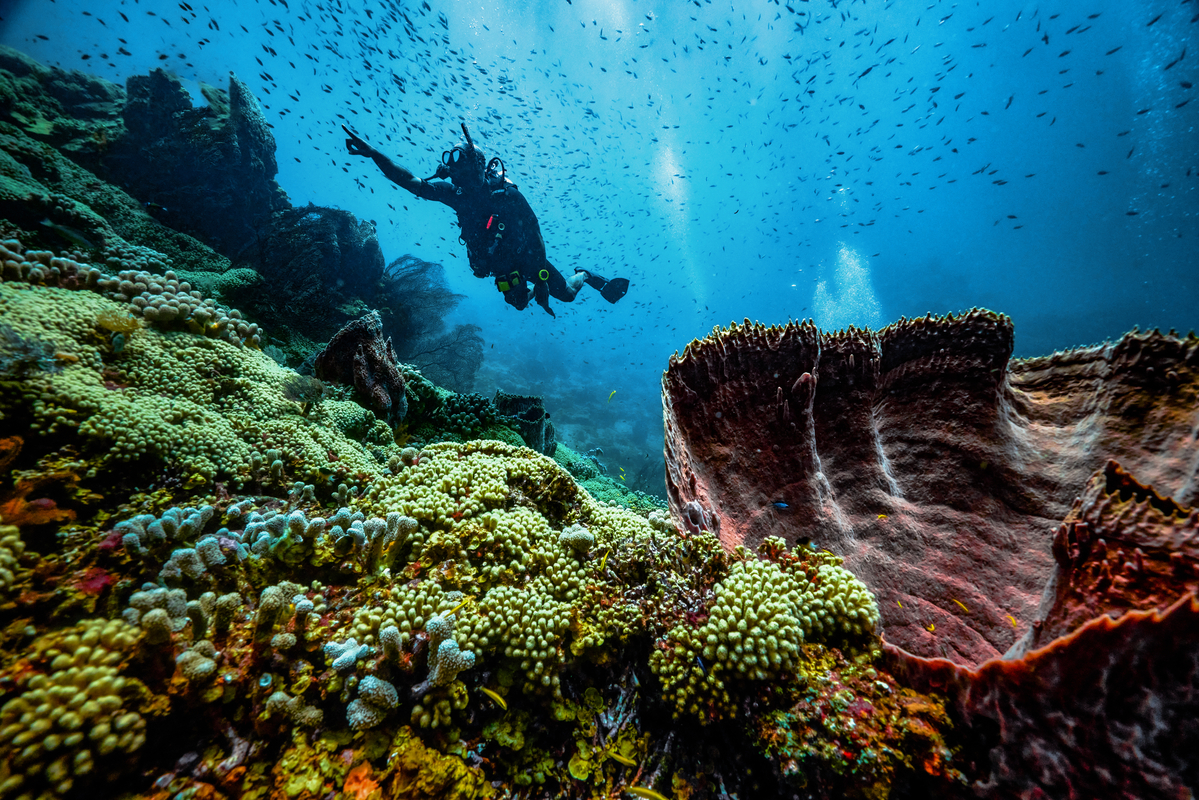
Diving in the Caribbean has been likened to experiencing an underwater carnival. Exotic creatures abound in these islands, particularly Saint Lucia, which is a dream for scuba divers everywhere. As you’re diving in warm Saint Lucian waters, expect to see plenty of exotic fish zooming past, fascinating wrecks, vibrant coral reefs, and other stunning underwater features.
What makes scuba diving in Saint Lucia so amazing is that the island is surrounded by magnificent reefs at locations which appeal to divers of all skill levels. You can opt for boat dives and even night dives which offer diverse experiences. Saint Lucia is also a great choice for divers because there are all-inclusive resorts like Sandals which are well known for their dive-oriented holiday packages. This means it’ll not be hard to find a dive operator who will take you under their wing to ensure you get the best experience.
Whether you’re just starting off or you’ve been a scuba lover for a while, you’ll be able to see and experience a whole new world in Saint Lucia. As you dive off the coasts of this alluring island, you’ll be reminded that scuba diving really does press the reset button on life, helping one to learn to appreciate the simple and beautiful things, in and out of the water!
Tip: Stay at any of the three Sandals all-inclusive resorts in Saint Lucia and get access to amenities of all three resorts. PADI certified guests dive for free (max. two tanks a day) during their entire stay! On top of that, guests can enjoy unlimited gourmet food at 27 restaurants, unlimited (alcoholic) drinks, water sports, golf at two golf courses and more! It’s all included in your stay.
The warm tropical waters of Saint Lucia are home to a plethora of marine life that you can get more familiar with during dive sessions on the island. Whether you opt for shallow dives or go into the deep you’re bound to see something fascinating.
Common dive sightings in Saint Lucia include snapper, grunts, parrotfish, pufferfish, trumpetfish, lobster, golden-spotted eels, stingrays and manta rays, lionfish, flying gurnard, goatfish, damselfish, chromis, wrasse, spotted drums, frogfish, and the list goes on. Depending on where you dive and the time of your session, you may also spot turtles, seahorses, or even barracuda and nurse sharks.
It’s a good idea to let your dive operator know what you’re hoping to see while booking your dive trip so they can try to take you to a location where you’re likely to have a run-in.
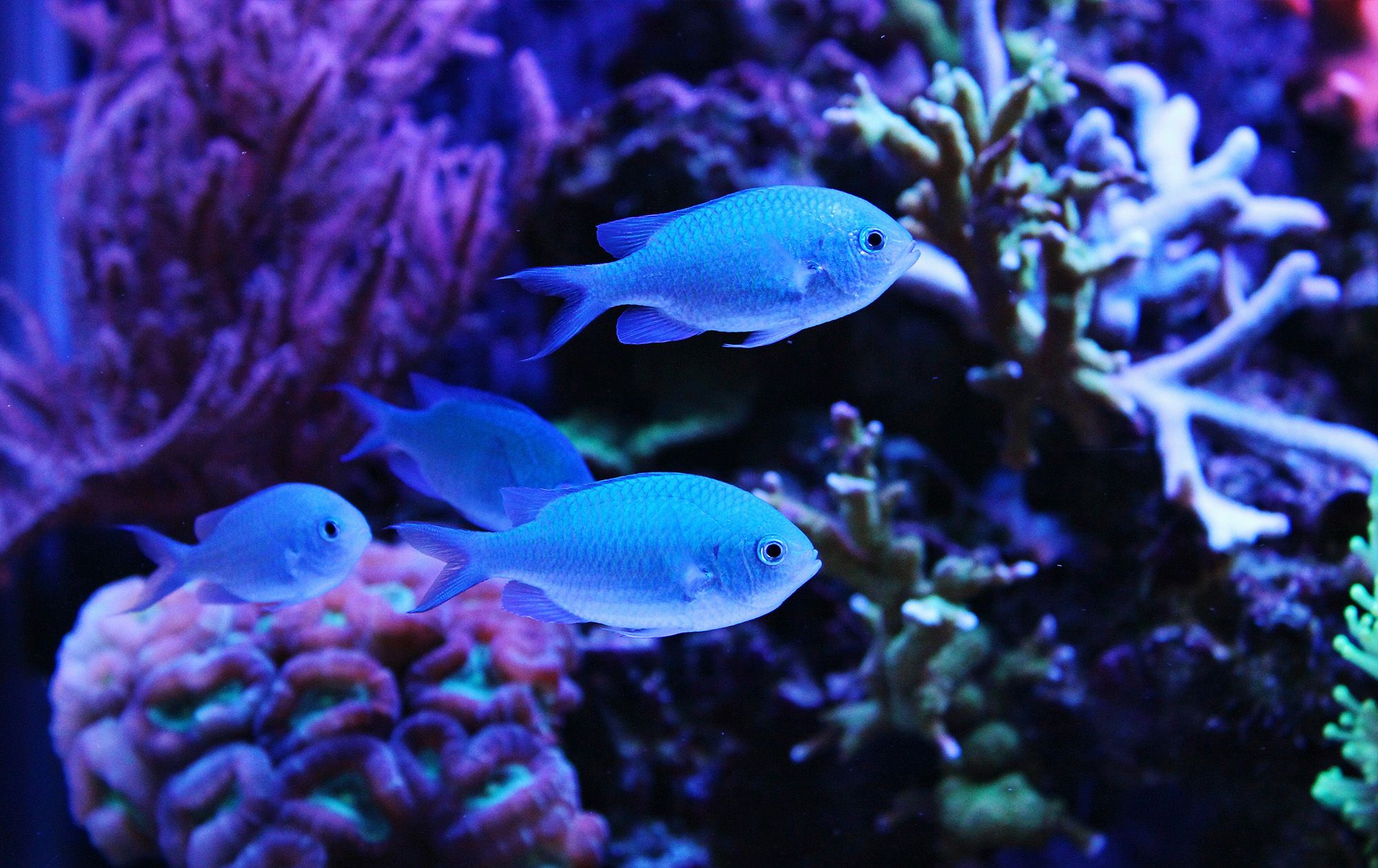
Photo credit: Vojce/Shutterstock.com
Dive Level: Advanced
Available from: Sandals Grande St. Lucian, Sandals Regency La Toc, Sandals Halcyon
If you’ve been diving for a while then you’re more likely to appreciate Trou Diable. This dive isn’t complicated at all, and it revolves around a flat coral reef at the 40 ft mark. Divers can go 100 ft deep and beyond here to explore the reef. Beneath the waves there are coral of all types, a kaleidoscope of fishes including grunts and chromis, and the occasional turtle. This reef has been described as among the healthiest around the island.
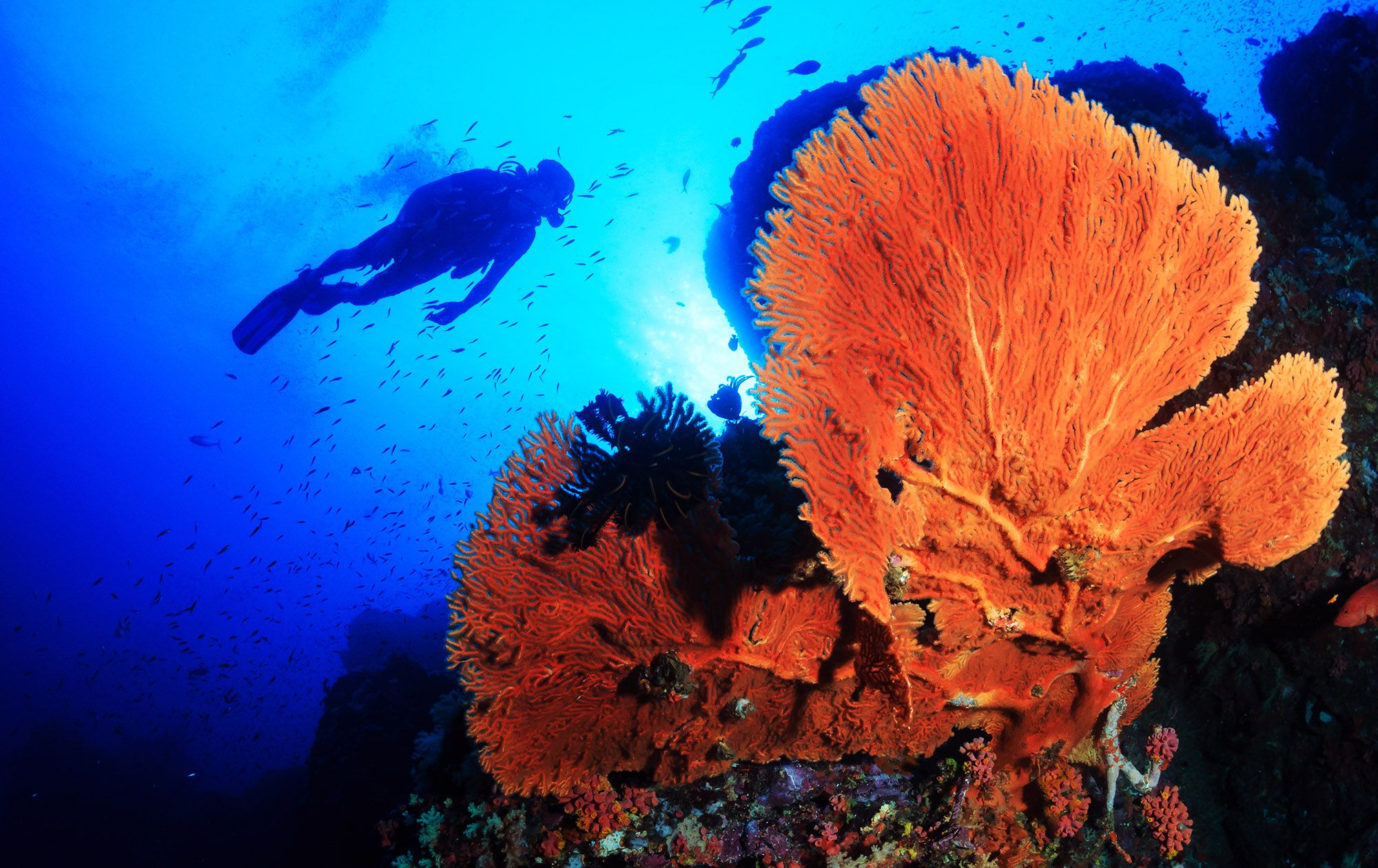
Photo credit: Richard Whitcombe/Shutterstock.com
Dive Level: Advanced
Available from: Sandals Grande St. Lucian, Sandals Regency La Toc, Sandals Halcyon
Keyhole is one of the most spectacular dive sites in Saint Lucia and not just for the volcanic peaks that protrude almost straight up to the surface. It appeals to divers because you can almost always spot something interesting or rare. During this dive you’ll get up close to the four peaks that are covered with black and orange gorgonians. You’ll also be able to swim with trumpetfish, grouper, snapper, filefishes, and even seahorses.
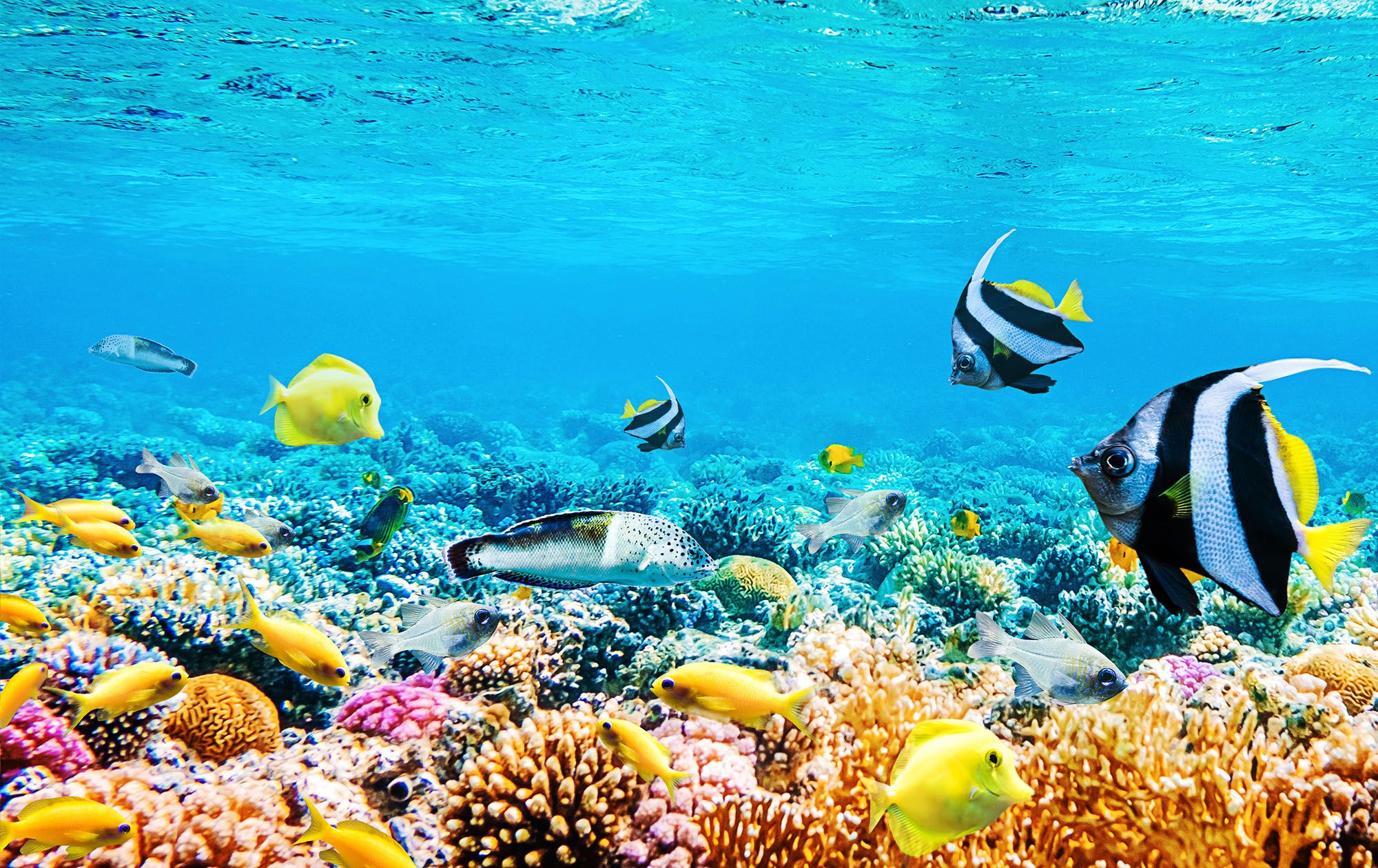
Photo credit: In Green/Shutterstock.com
Dive Level: Advanced
Available from: Sandals Grande St. Lucian, Sandals Regency La Toc, Sandals Halcyon
As the name suggests, this dive site is straight out of an undersea fairytale. The vibrancy of the coral and sponges here are what make this area stand out most, and for this reason it is a very popular location for underwater photography. The currents can be strong here and this has been attributed to just how clean the natural elements have remained over the years. The surface slopes gradually from 40 ft to 200 ft, and on this dive, you are very likely to encounter turtles, which are usually friendly enough!
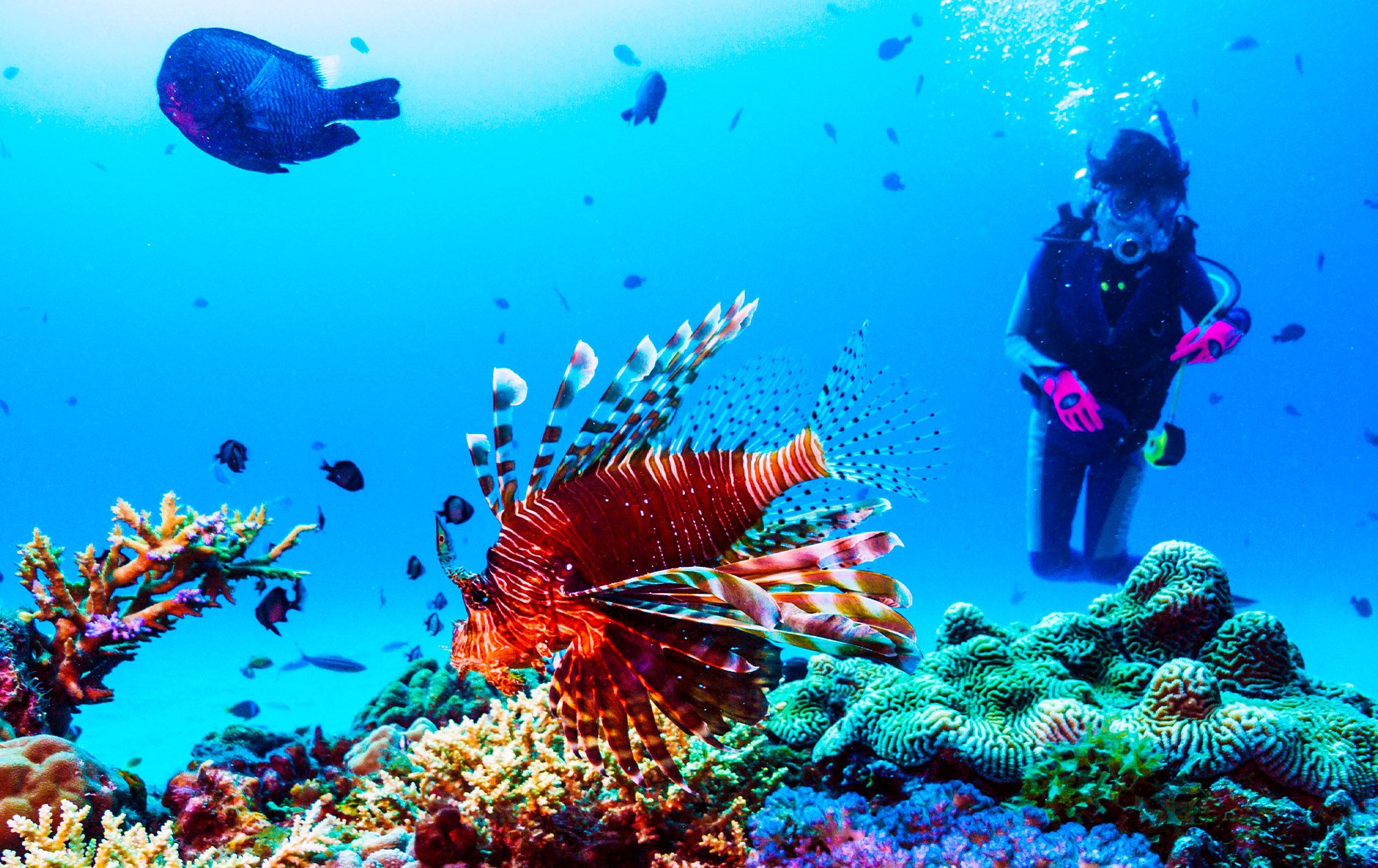
Photo credit: tank200bar/Shutterstock.com
Dive Level: Novice
Available from: Sandals Grande St. Lucian, Sandals Regency La Toc, Sandals Halcyon
Anse Cochon North & South Reef should be at the top of your dive list during your scuba holiday in Saint Lucia. These are beach dives, and the northern reef extends downward to 40 ft at which point it intertwines with Virgin Cove Reef. The South Reef on the other hand is shallower (max 30 ft). Both dives are suitable for beginners or divers who just want to take it easy. If coral is what you’re more interested in, go for the northern side. Otherwise, either end of the reef will do as reef fish are plentiful. Sightings range from seahorses, scorpion fish, and cleaner shrimp, to turtles, trumpetfish, eels, squid, octopus, and more.
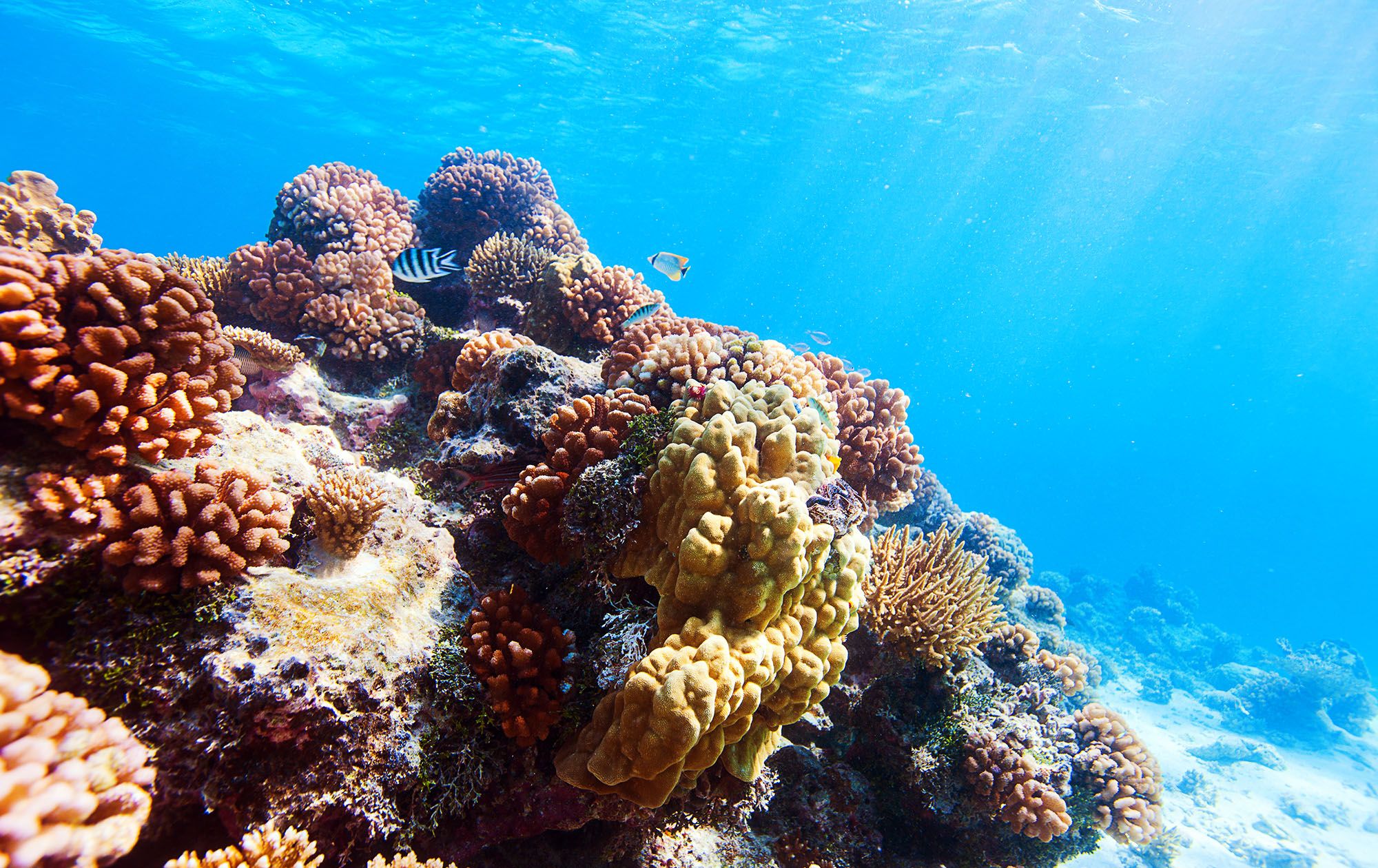
Photo credit: BlueOrange Studio/Shutterstock.com
Dive Level: Novice
Available from: Sandals Grande St. Lucian, Sandals Regency La Toc, Sandals Halcyon
Trumpetfish and turtles are common sightings at the Anse Chastanet dive site on the west coast of Saint Lucia. As this area is generally one of the best places for scuba diving in Saint Lucia, it is commonly recommended to divers. The reef here is 15 ft at the shallow end, extending to around 60 ft which makes it ideal for beginners.
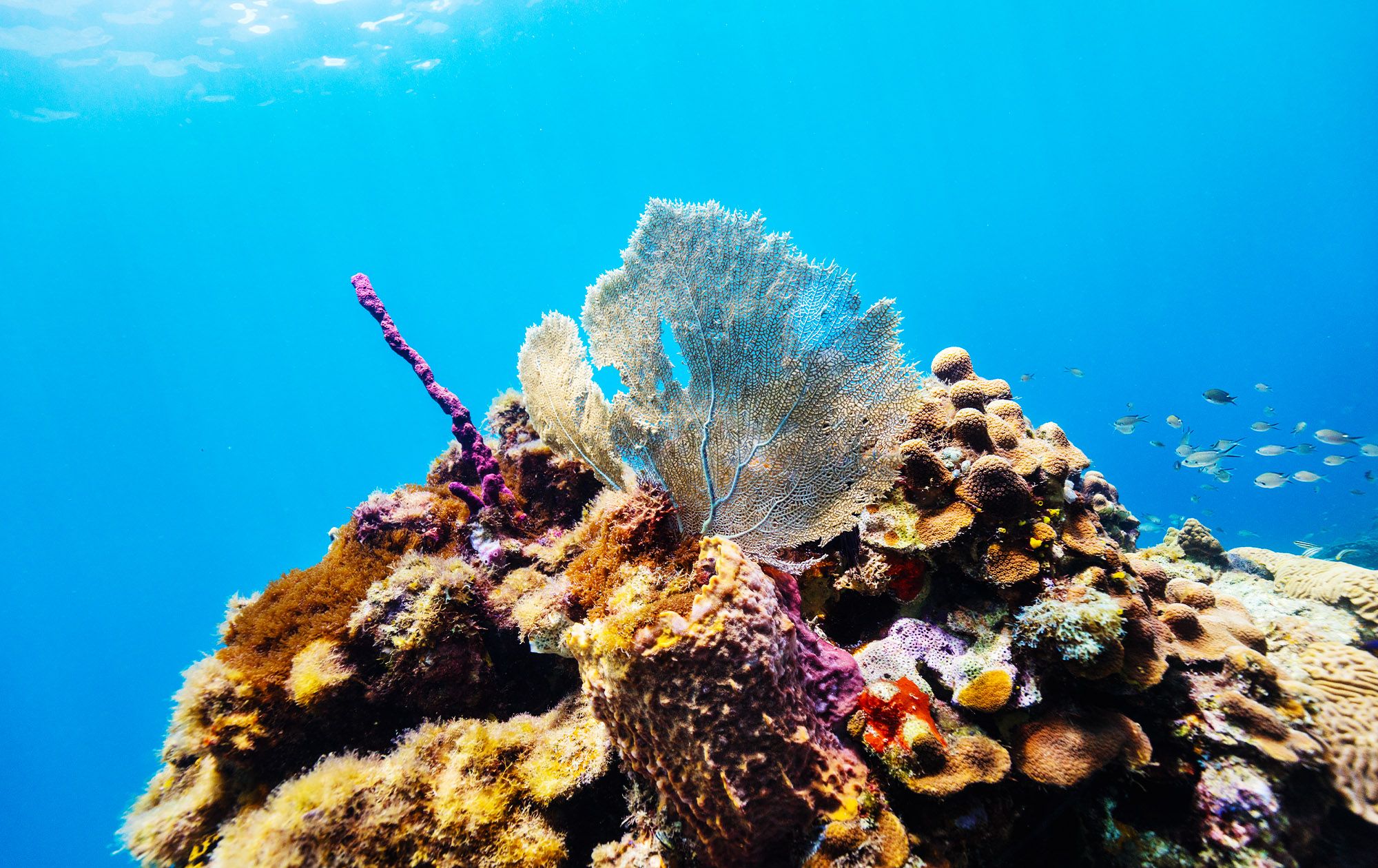
Photo credit: BlueOrange Studio/Shutterstock.com
Dive Level: Advanced
Available from: Sandals Grande St. Lucian, Sandals Regency La Toc, Sandals Halcyon
Coral Gardens can be accessed via a boat trip, and that part of the excursion alone is fascinating. It is in the Soufriere area and as you approach the majestic Pitons (a World Heritage Site in Saint Lucia), you’ll simply be awestruck.
Even more amazement is in store once you dive down to Coral Gardens which is at the base of Gros Piton which rises 2438 ft high. This experience is truly humbling, and below the waves you’ll swim amongst tropical fishes of all varieties, five-finger corals, sargassum triggerfish and sometimes barracuda in deeper areas. There are quite a lot of juvenile fish at this dive site which starts at a depth of 15 ft extending downwards to around 90 ft.

Photo credit: GOLFX/Shutterstock.com
Dive Level: Advanced
Available from: Sandals Grande St. Lucian, Sandals Regency La Toc, Sandals Halcyon
You never quite know what to expect on a dive in Saint Lucia. For that reason, it can be hard to pick the best place to go. Fortunately, sites like Rosemond’s Trench have already been rated as a “must do” by many divers to the island, which means you’re unlikely to be disappointed after suiting up. Expect to see valleys and trenches, and even a small tunnel which leads to a chimney. The maximum depth of this dive is 36 ft, and you’re likely to spot fish species too numerous to mention, including the elusive frogfish – you’re also likely to encounter turtles and seahorses.
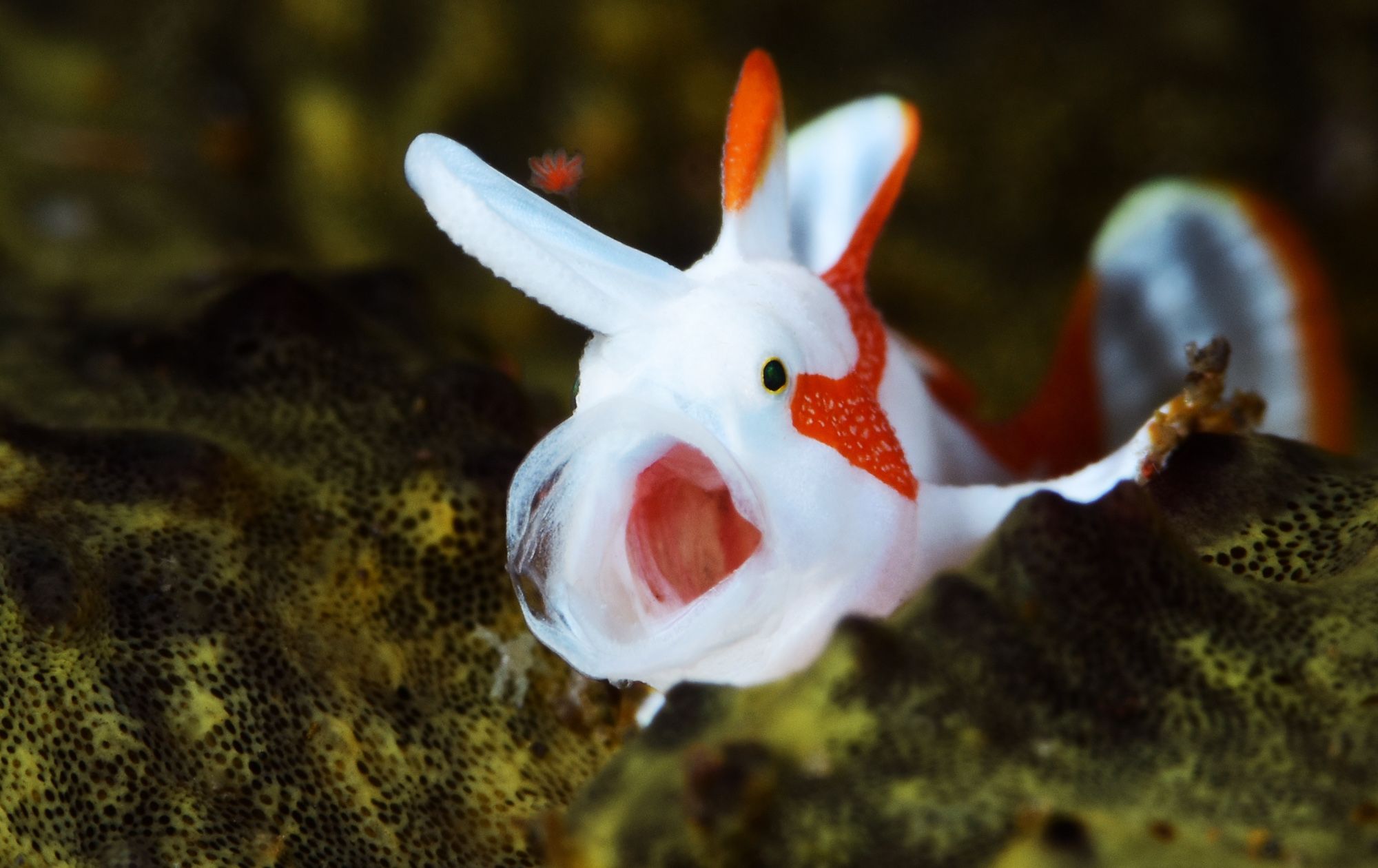
Photo credit: DiveIvanov/Shutterstock.com
Dive level: Advanced
Available from: Sandals Grande St. Lucian, Sandals Regency La Toc, Sandals Halcyon
The Lesleen M is a 165-foot cargo vessel which was purposely sunk in 1986 by the Fisheries Department of Saint Lucia. The intention was to create an artificial reef, and today the wreck can be viewed off the shore of Anse Cochon on the west coast of Saint Lucia. Anse Cochon is to the south of Marigot Bay and this dive site has a maximum depth of 65 ft. As the ship remains in good form, divers can really get in there and see how much it has transformed over the years. On a dive here you might see things like lobster, moray eels, frogfish, and other reef fish.
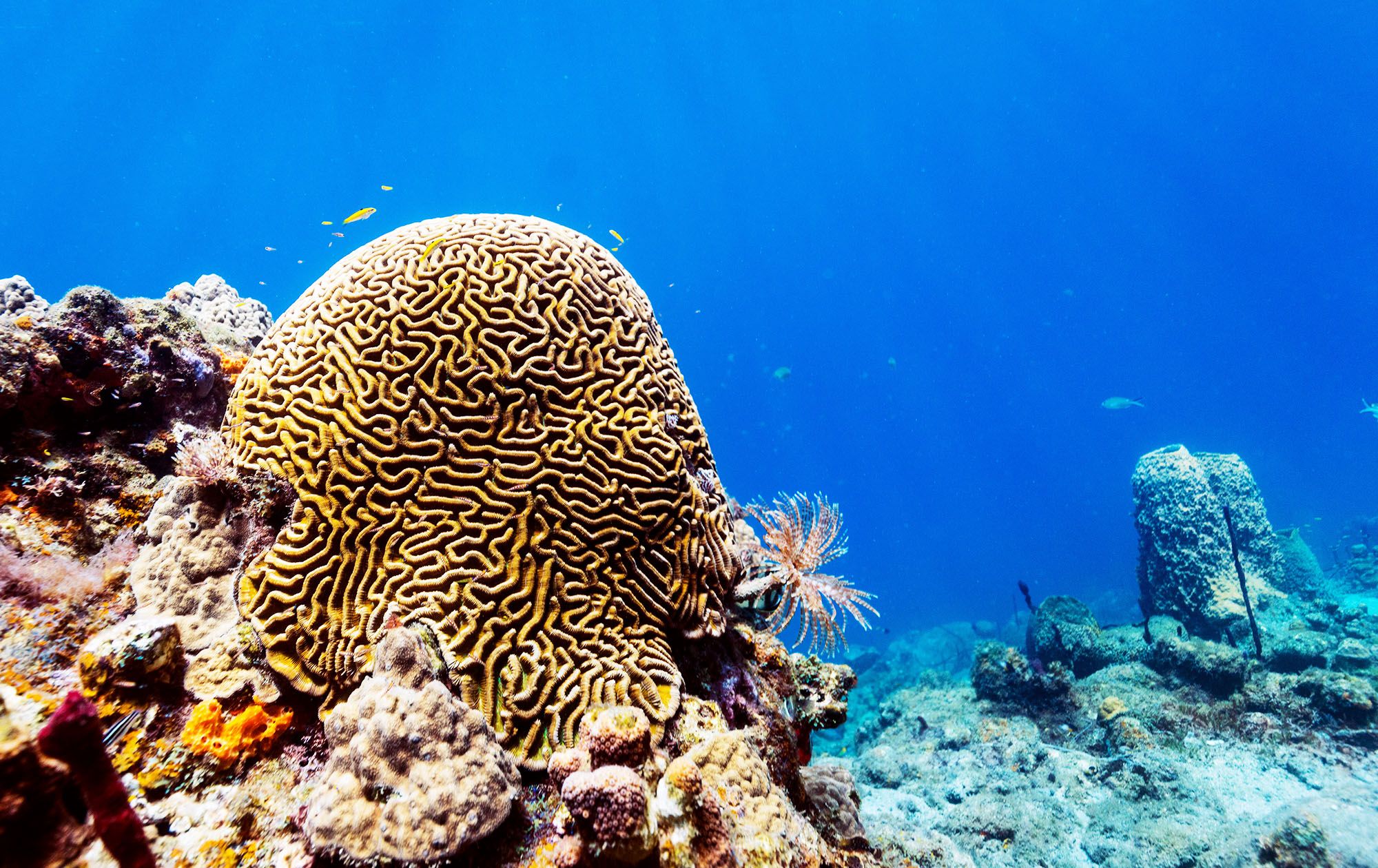
Photo credit: BlueOrange Studio/Shutterstock.com
Dive Level: Novice
Available from: Sandals Grande St. Lucian, Sandals Regency La Toc, Sandals Halcyon
This is the perfect dive site for scuba diving newbies. The reef starts off in a shallow area of 15 ft and extends to the 70 ft mark. Things to see here include barrel sponges, brain coral, snappers, grunts, turtles, Atlantic spadefish, and sometimes stingrays and barracudas toward the deeper end. This reef is notably shaped like a figure “9”, and it is diverse, getting more defined the deeper you dive.
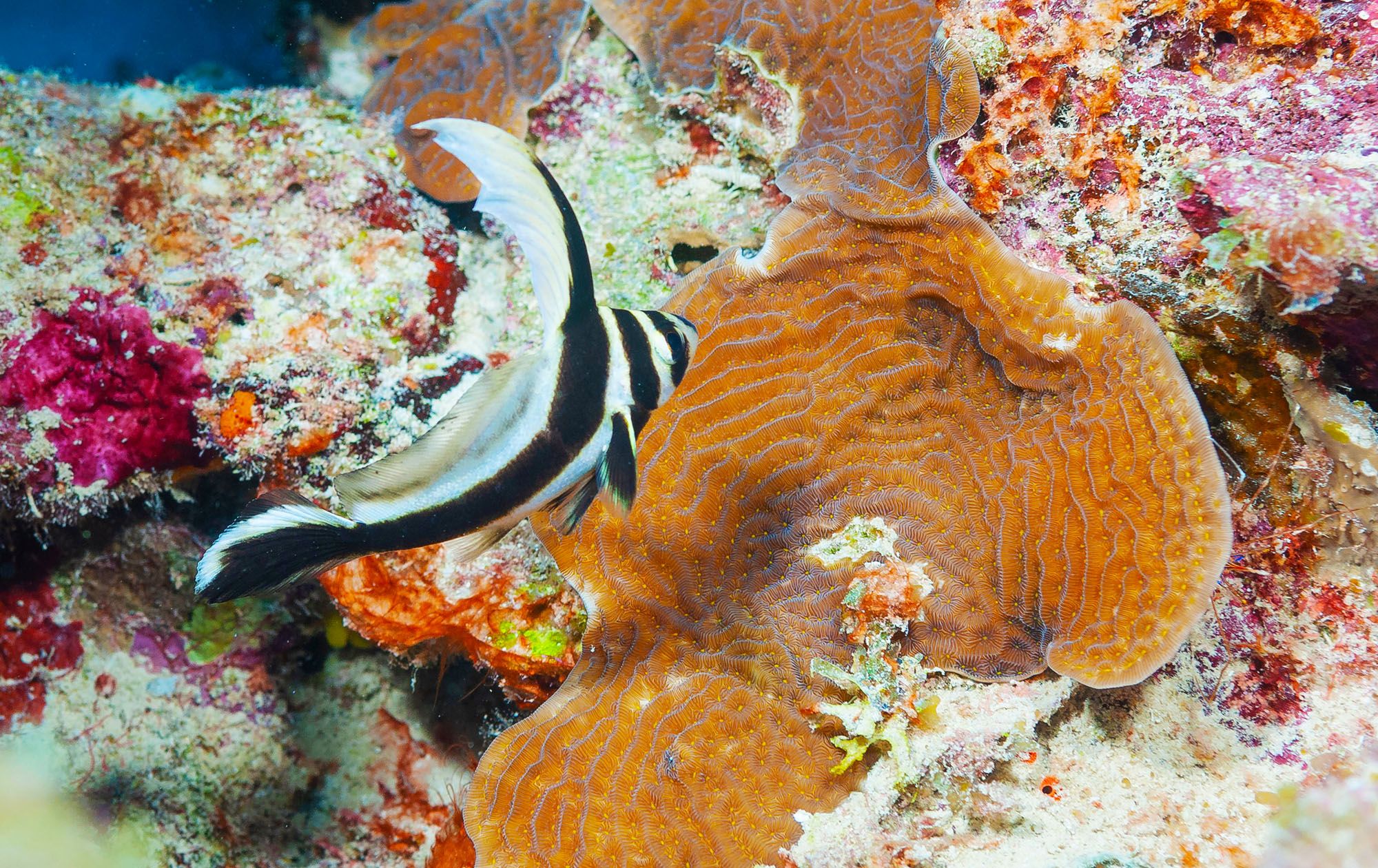
Photo credit: Jesus Cobaleda/Shutterstock.com
Dive Level: Advanced
Available from: Sandals Grande St. Lucian, Sandals Regency La Toc, Sandals Halcyon
Anse La Raye (a fishing village in Saint Lucia) translates to bay of rays, and the Anse La Raye Wall is one of many dive sites worth checking out while in Saint Lucia. This dive starts at 60 ft on the shallow end, and goes as deep as 110 ft. The wall is painted with marine life of all kinds and you’ll be enthralled by the vibrancy of the corals and some of the creatures you’ll come across. You may spot things like Bermuda chubs, spotted-drums, jacks, and rays, amid sponges and soft coral of every type imaginable.
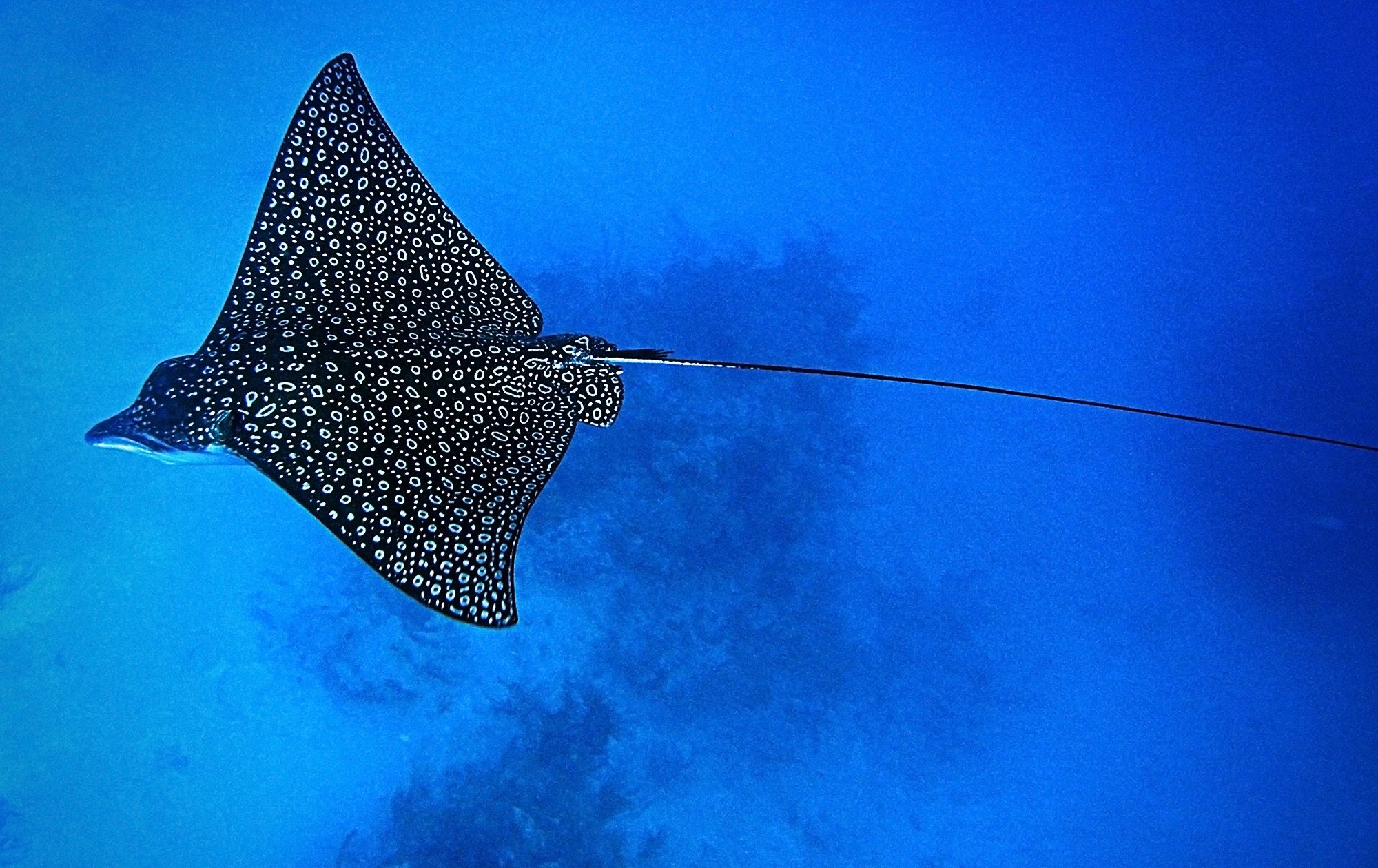
Photo credit: bayazed/Shutterstock.com
Dive Level: Novice
Available from: Sandals Grande St. Lucian, Sandals Regency La Toc, Sandals Halcyon
Bird Rock is a well-known congregation site for birds, as the name suggests. It is also a marking point for a great scuba expedition. This dive site is a good starting point for new divers with a maximum depth of 60 ft. Once you dive in, you’ll notice the sloping walls which are covered with coral, and lots of large boulders. Many kinds of reef fishes populate this area, and you may also spot eagle rays and stingrays.
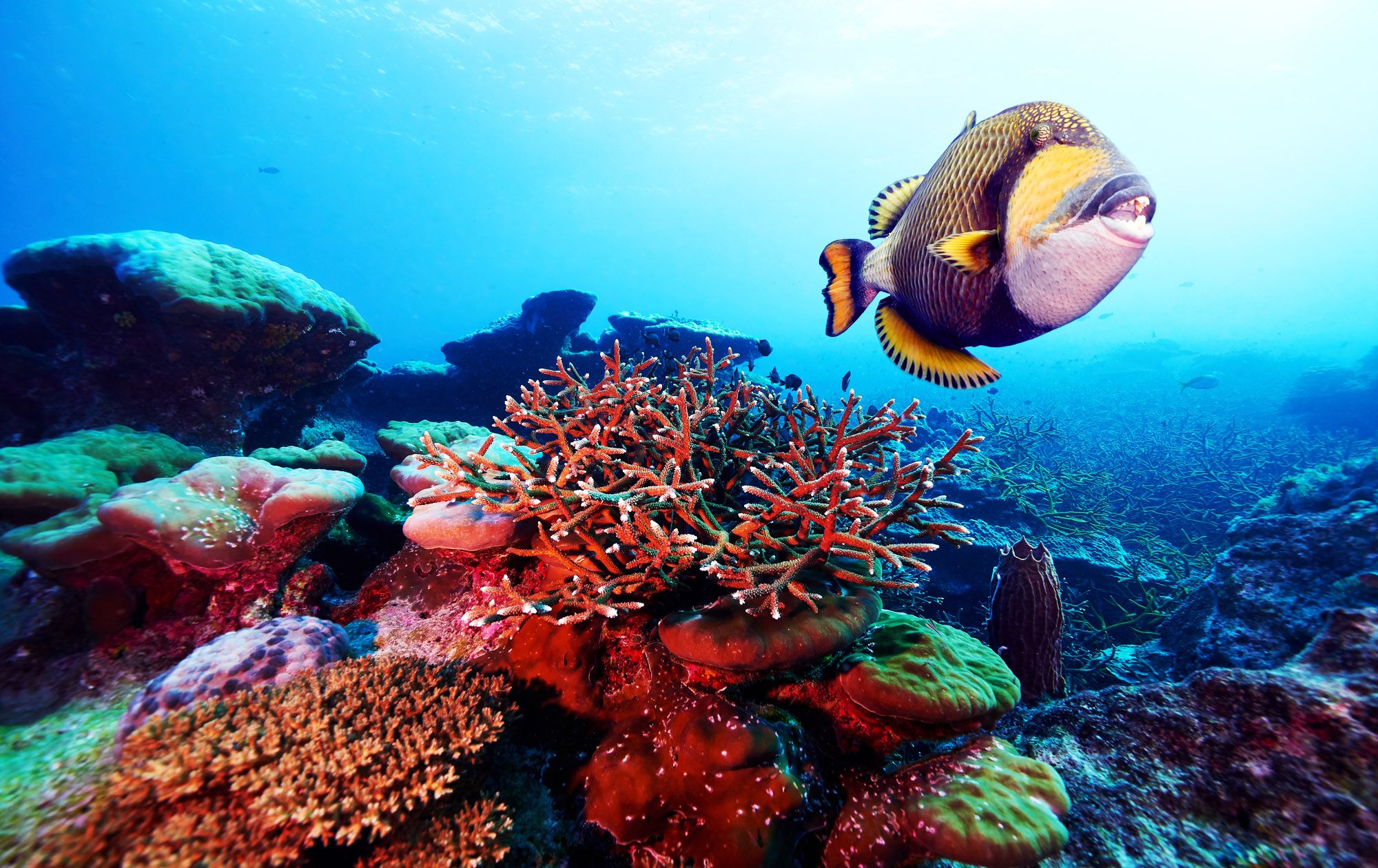
Photo credit: Damseak/Shutterstock.com
Dive Level: Novice
Available from: Sandals Grande St. Lucian, Sandals Regency La Toc, Sandals Halcyon
La Roche is near Rodney Bay – about a quarter mile out. Some people choose to go deep sea fishing around this area while others go for the more eco-friendly scuba session. La Roche is also known as Barrel ‘O’ Beef, and it is an islet around which you can have a fun filled dive session. There are underwater trenches in this area as well as underwater valleys where lobster, triggerfish, and sometimes barracuda can be spotted.
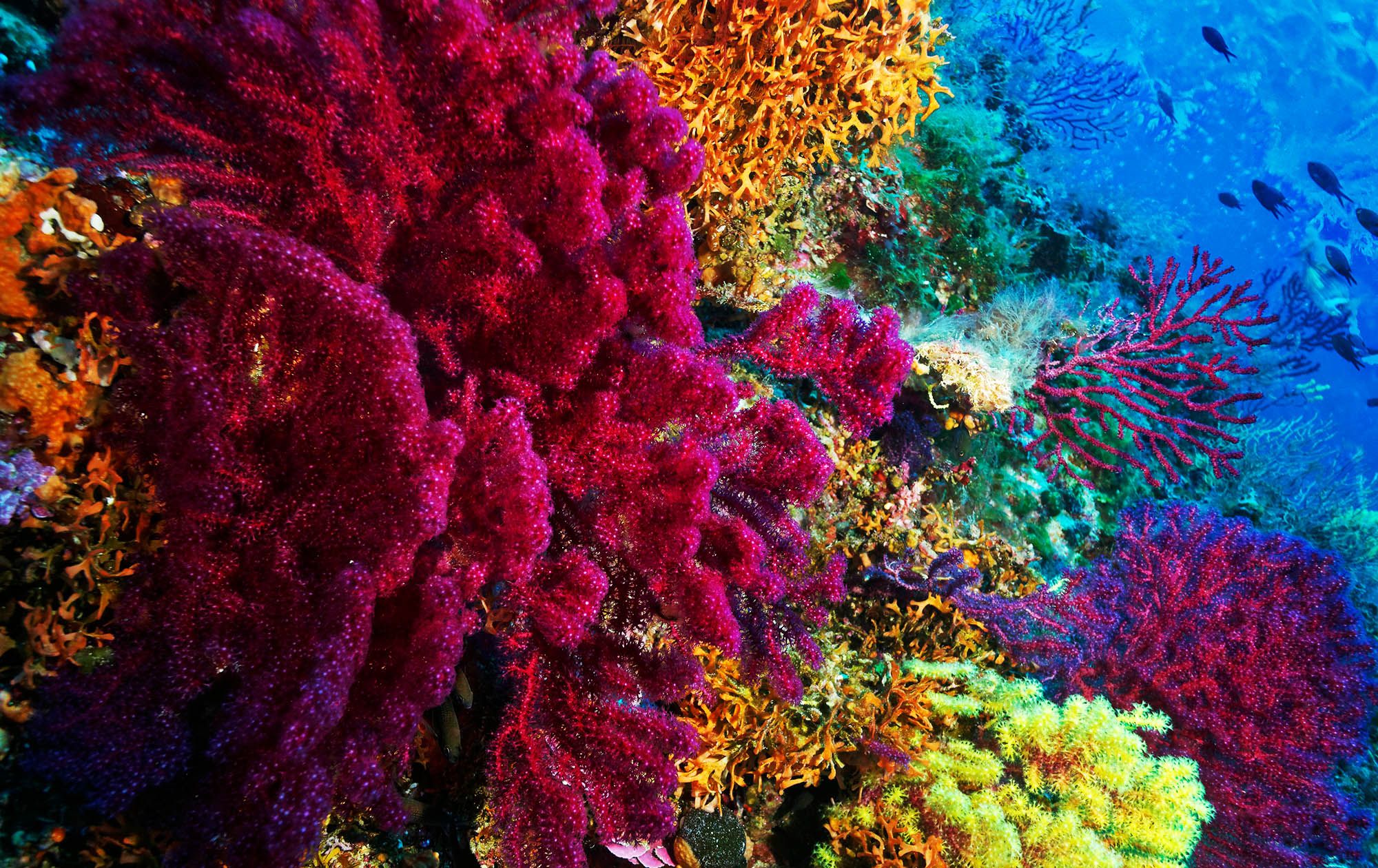
Photo credit: goran_safarek/Shutterstock.com
Dive Level: Advanced
Available from: Sandals Grande St. Lucian, Sandals Regency La Toc, Sandals Halcyon
With a name like this, you’ll be right to anticipate that this dive will be a little more exciting than most. You can start off at the base of Petit Piton (2619 ft), the smaller of the two majestic pitons in Soufriere. Lovers of the wall dive will be happy to know that this dive extends as deep as 1500 ft, and aside from an abundance of dazzling fishes, you’ll marvel at the huge fluorescent sponges and gorgonians. This dive site was named after a scene from the film Superman II.
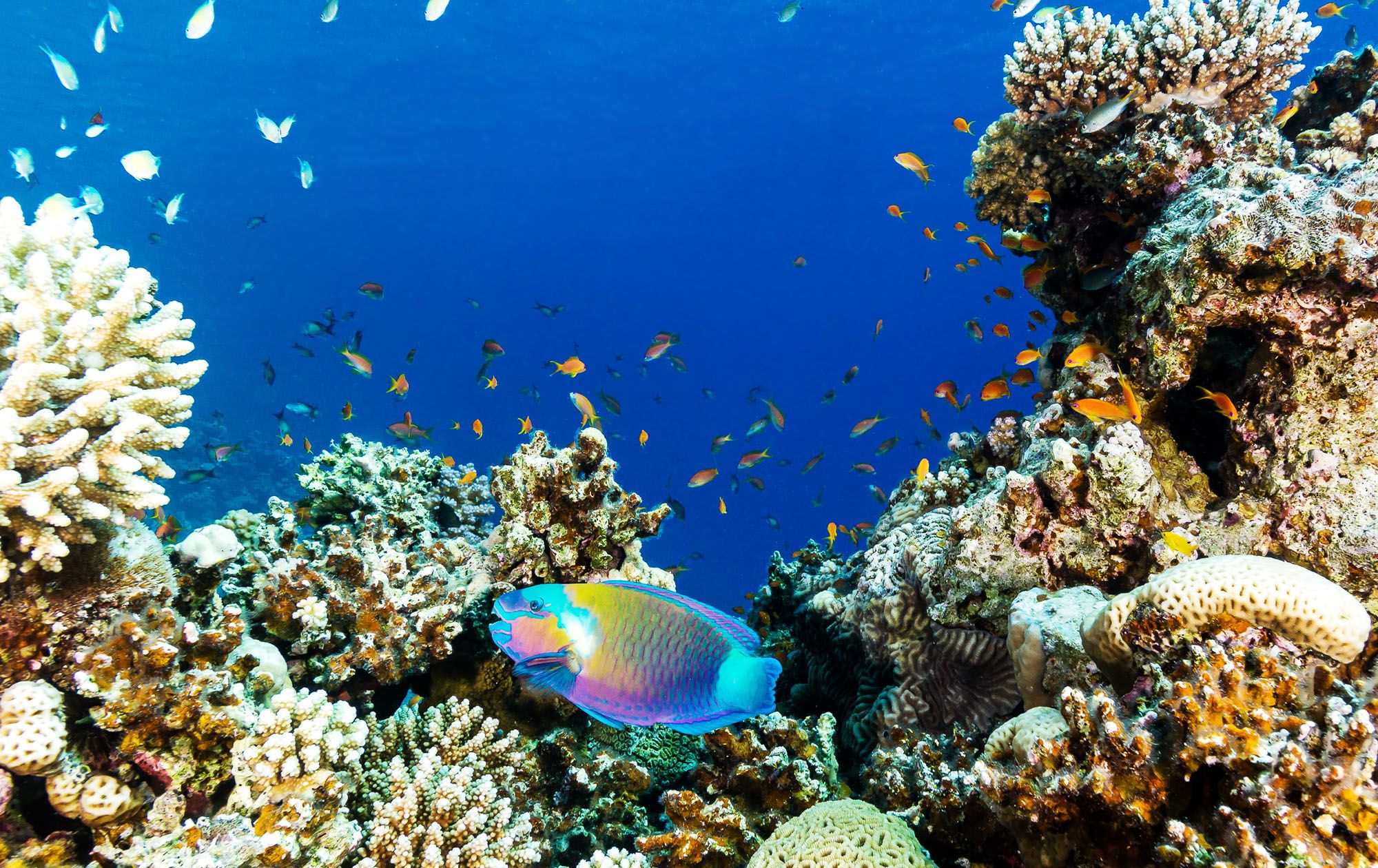
Photo credit: Richard Whitcombe/Shutterstock.com
Dive Level: Novice
Available from: Sandals Grande St. Lucian, Sandals Regency La Toc, Sandals Halcyon
You’ll get to swim with brightly coloured parrotfish, moray eels, lobster, and other diverse creatures of the sea during a dive at Dinosaur Reef. This dive is Pigeon Island and the reef got its name because the base of this area resembles a sleeping dinosaur. There’s a small freighter underwater here which you can explore around this reef with a maximum depth of 50 ft.
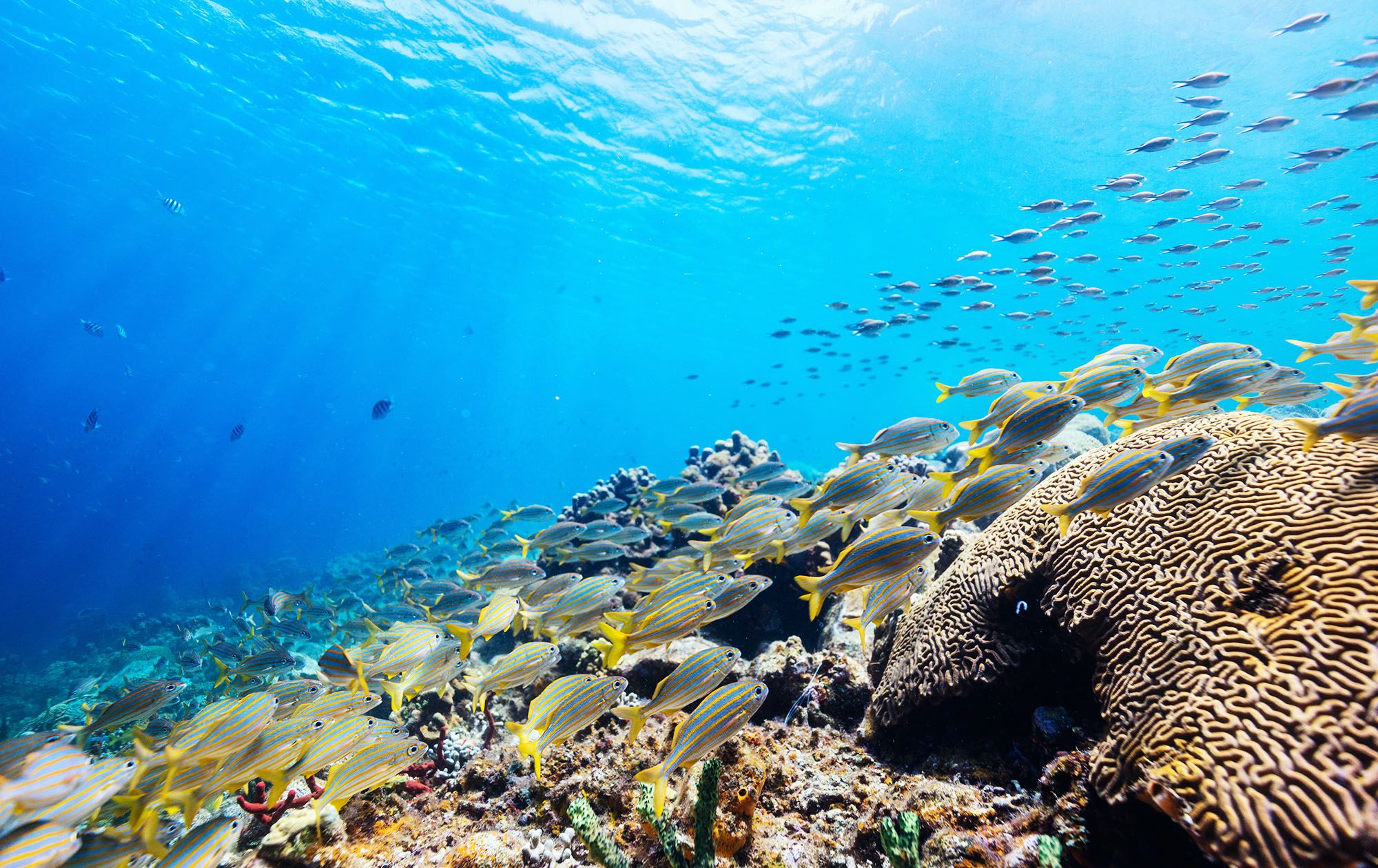
Photo credit: BlueOrange Studio/Shutterstock.com
Dive Level: Novice
Available from: Sandals Grande St. Lucian, Sandals Regency La Toc, Sandals Halcyon
Pigeon Island offers a leisurely dive that starts at 15 ft and progresses to a maximum depth of 60 ft. This dive is suitable for newbies who will get to explore the reef and potentially see things like eagle rays, eels, lobsters and sometimes barracuda. The Pigeon Island reef dive at the base of Pigeon Island starts over a sandy area leading to a reef and an area with large boulders and other prominent features.
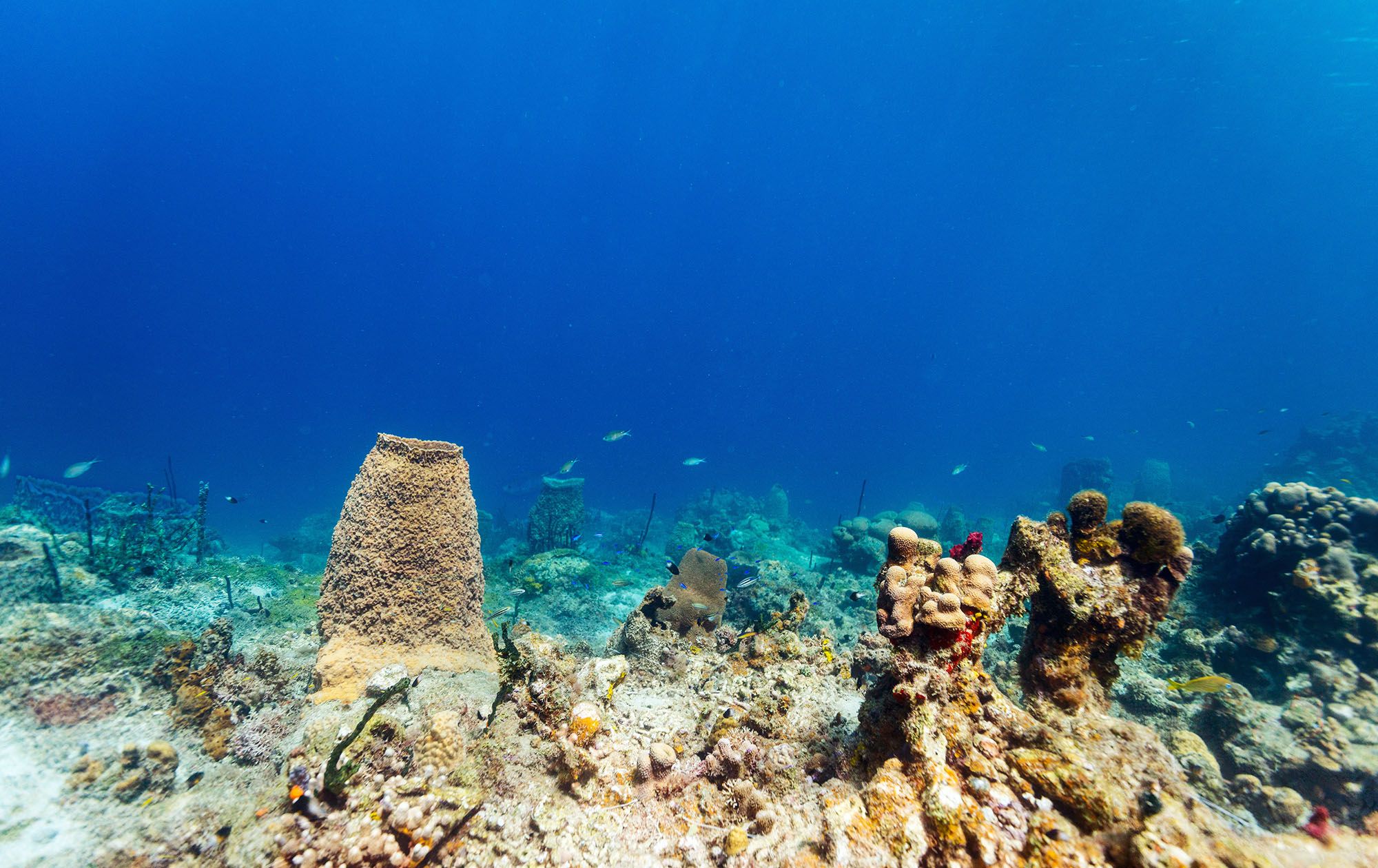
Photo credit: BlueOrange Studio/Shutterstock.com
Dive Level: Advanced
Available from: Sandals Grande St. Lucian, Sandals Regency La Toc, Sandals Halcyon
While you can spot turtles around this area, turtles appearing at this location have little to do with the name of this dive site. There are lots of other things to see though at this location with a maximum depth of 140 ft including pillar corals and barrel sponges, amongst a thriving population of reef fishes. Turtle Reef is 40 ft at the shallow end.
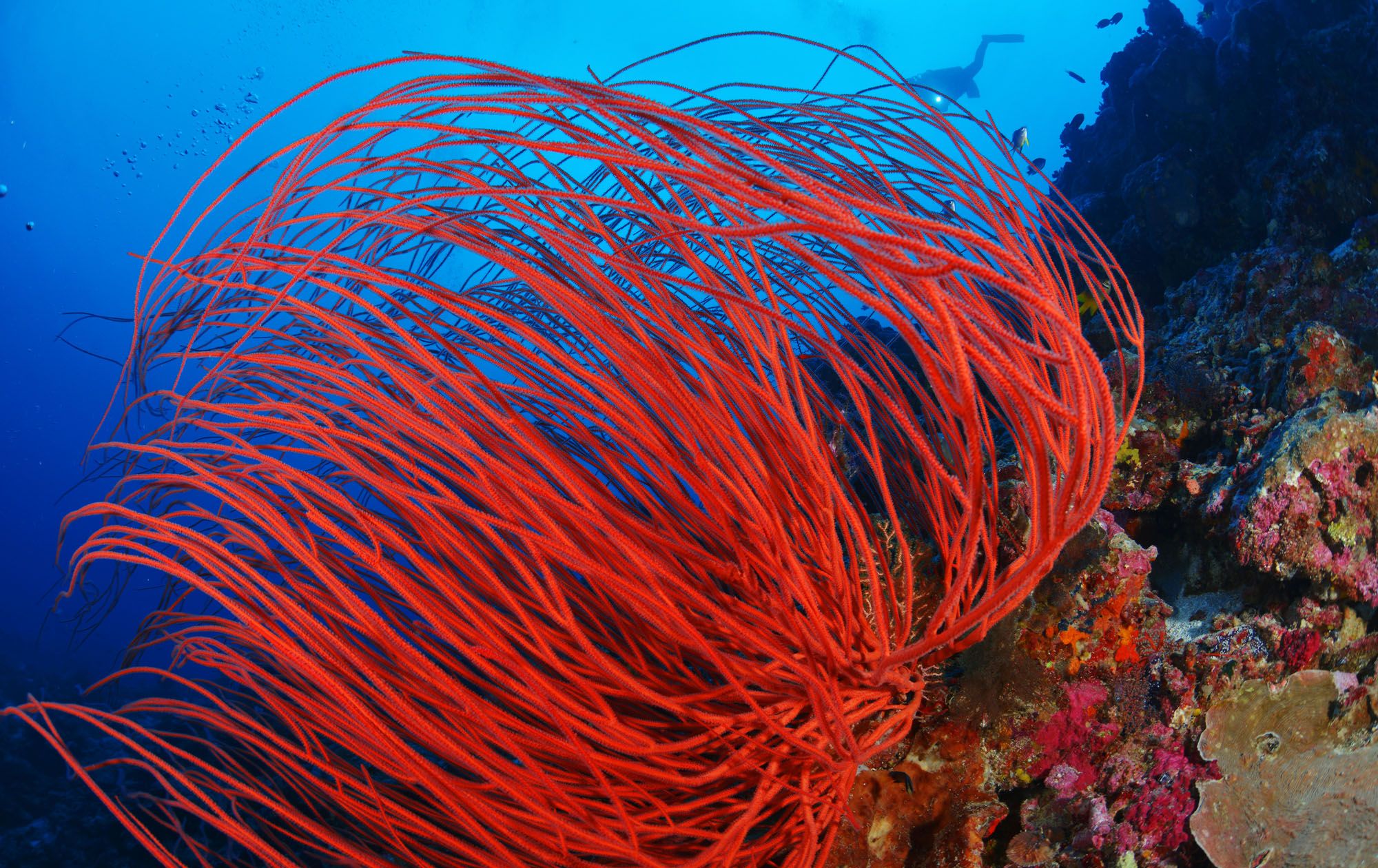
Photo credit: Chanwit Polpakdee/Shutterstock.com
Dive Level: Advanced
Available from: Sandals Grande St. Lucian, Sandals Regency La Toc, Sandals Halcyon
At the base of Petit Piton, Piton Wall is another cool dive site. You’ll love the opportunity to float around this majestic underwater community scoping the wall for interesting sightings and interacting with critters of the undersea. Sea whips, feather duster worms, gorgonians and other soft corals cover the wall which stretches down hundreds of feet making this a dive filled with colour and potential for lovers of the sea.
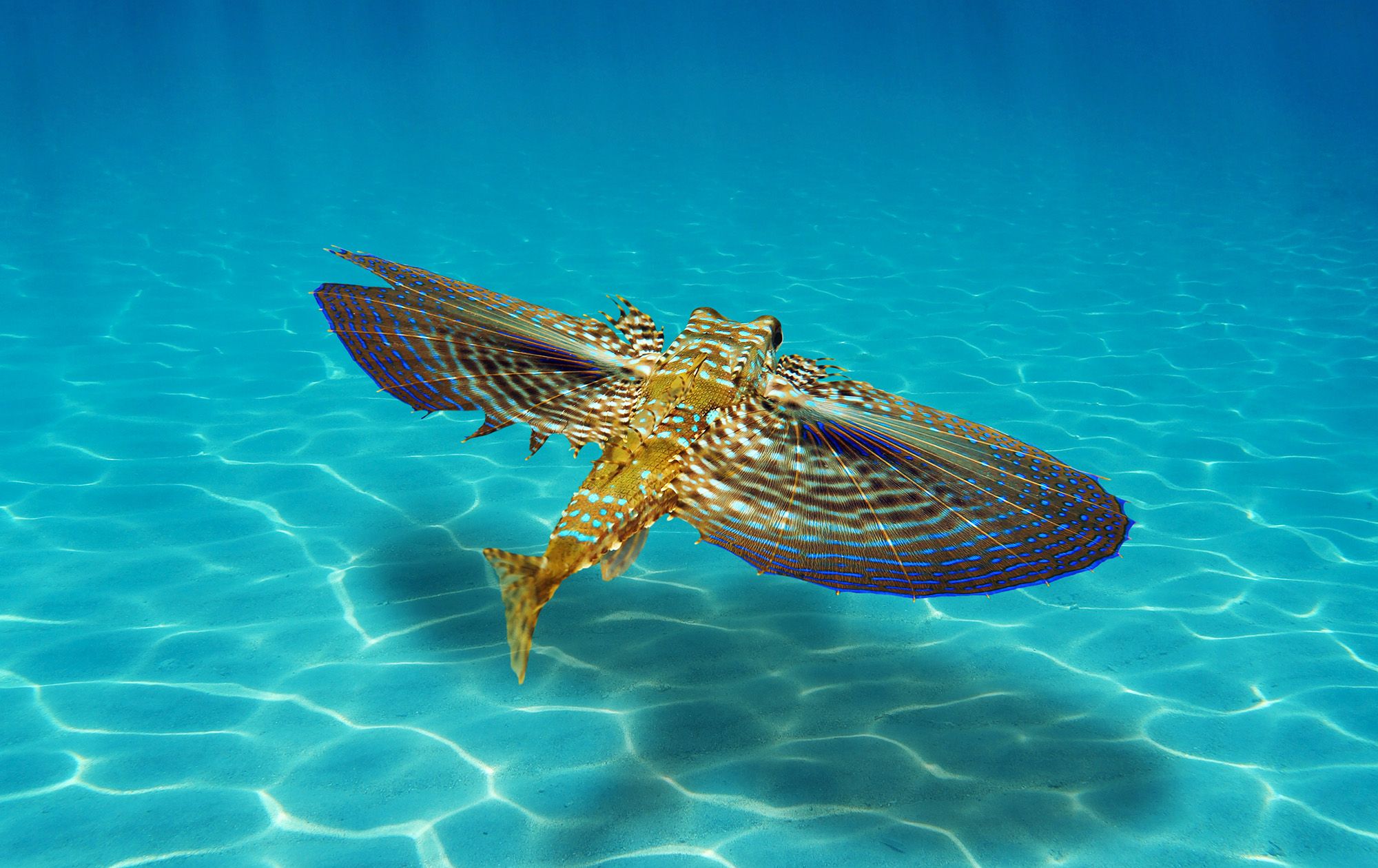
Photo credit: Damsea/Shutterstock.com
Dive Level: Novice
Available from: Sandals Grande St. Lucian, Sandals Regency La Toc, Sandals Halcyon
Smugglers Cove is one of the most beautiful beaches in Saint Lucia. This strand in Cap Estate to the extreme north of the island is tucked away and rarely crowded. Beginners will love diving here as it is not as deep as some of the other sites for more advanced scuba divers – the maximum depth is about 40 ft. Sightings include flying gurnard, lobster, and trumpetfish, and there are also trenches and shelves that are interesting to see. You can dive from the shore or go out on a boat to begin your dive, and the rest of your party can stay on the shore to enjoy the sunshine!
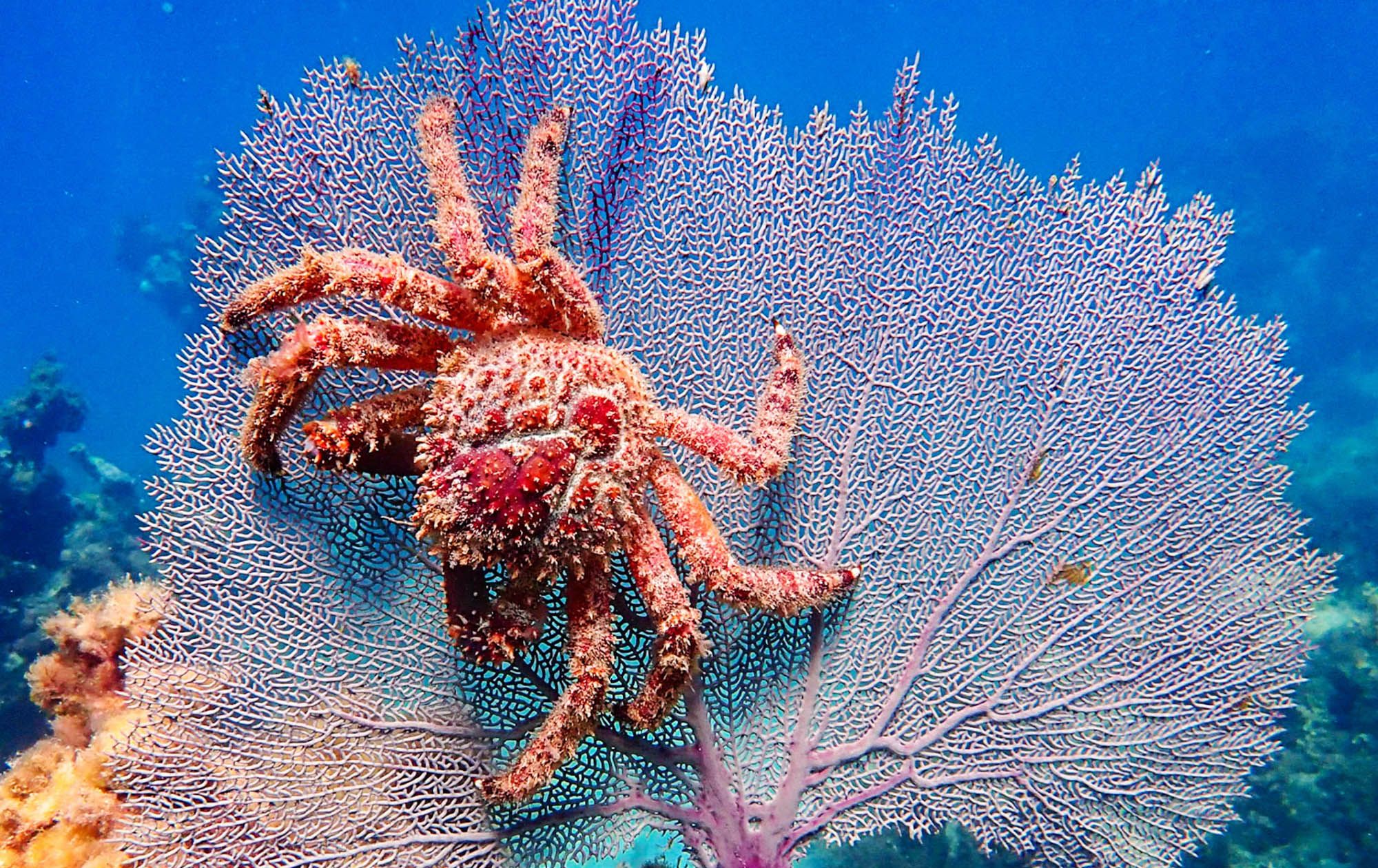
Photo credit: Jonathan Hernould/Shutterstock.com
Dive Level: Advanced
Available from: Sandals Grande St. Lucian, Sandals Regency La Toc, Sandals Halcyon
If you’re looking for a dive for more experienced divers, Jambet Point might just be calling your name. This reef is shaped like a horseshoe and while diving you may spot crabs, lobsters, spotted drums, and occasionally stingrays on the sandy bottom. There’s a wall you can explore which is relatively small, and a flat coral reef. The depth of the reef is about 50 ft.
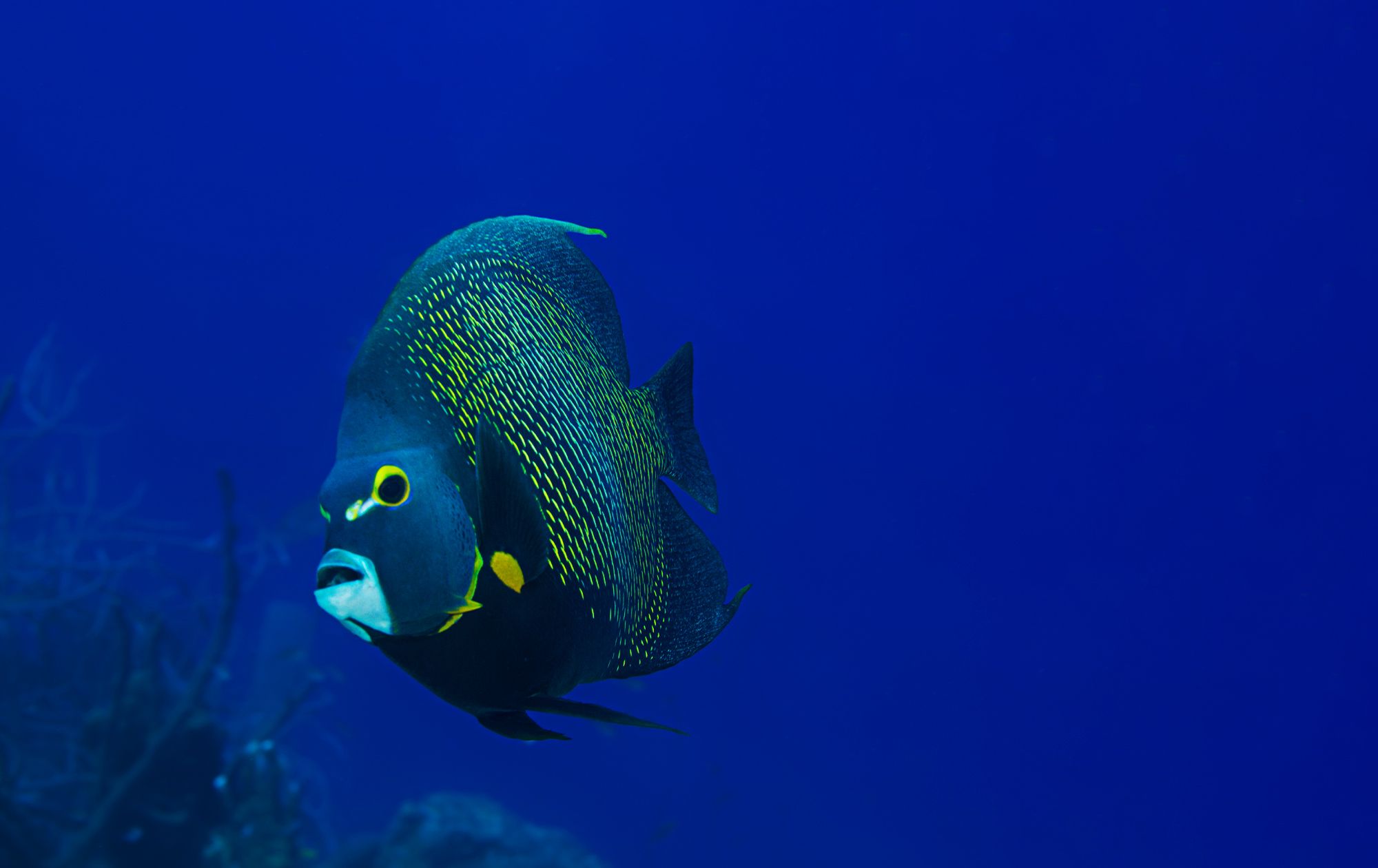
Photo credit: Lynn Archer/Shutterstock.com
Dive Level: Advanced
Available from: Sandals Grande St. Lucian, Sandals Regency La Toc, Sandals Halcyon
The Daini Koyomaru was a Japanese dredger which was sunk in 1996. Toppled over on the ocean floor, it now serves its purpose as an artificial reef. The wreck is about 244 ft long and for the most part, it is in one piece. The wreck is around the 108ft mark, and during this experience skilled divers will be able to swim with pufferfish, French angelfish, and jacks, with sightings of barracuda.
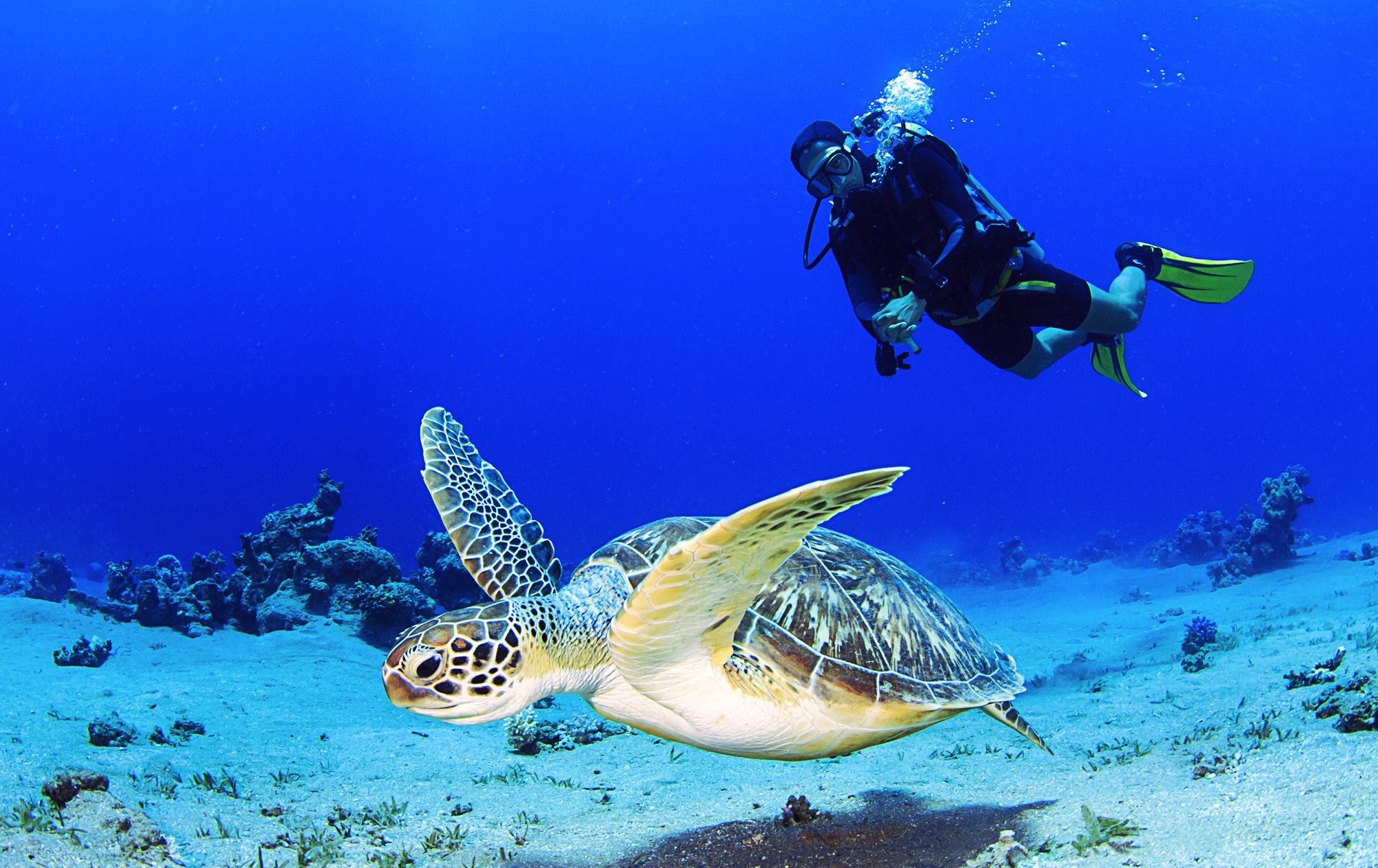
Photo credit: Rich Carey/Shutterstock.com
Dive Level: Novice
Available from: Sandals Grande St. Lucian, Sandals Regency La Toc, Sandals Halcyon
The Caribbean Sea meets the Atlantic Ocean at this dive site to the north of Saint Lucia. Located in Cap Estate, the maximum depth of reef exploration in this area is 60 ft. Here you can spot scorpionfish, flying gurnard, and sometimes even turtles and rays. As you get deeper into this dive, you might run into things like barracuda.
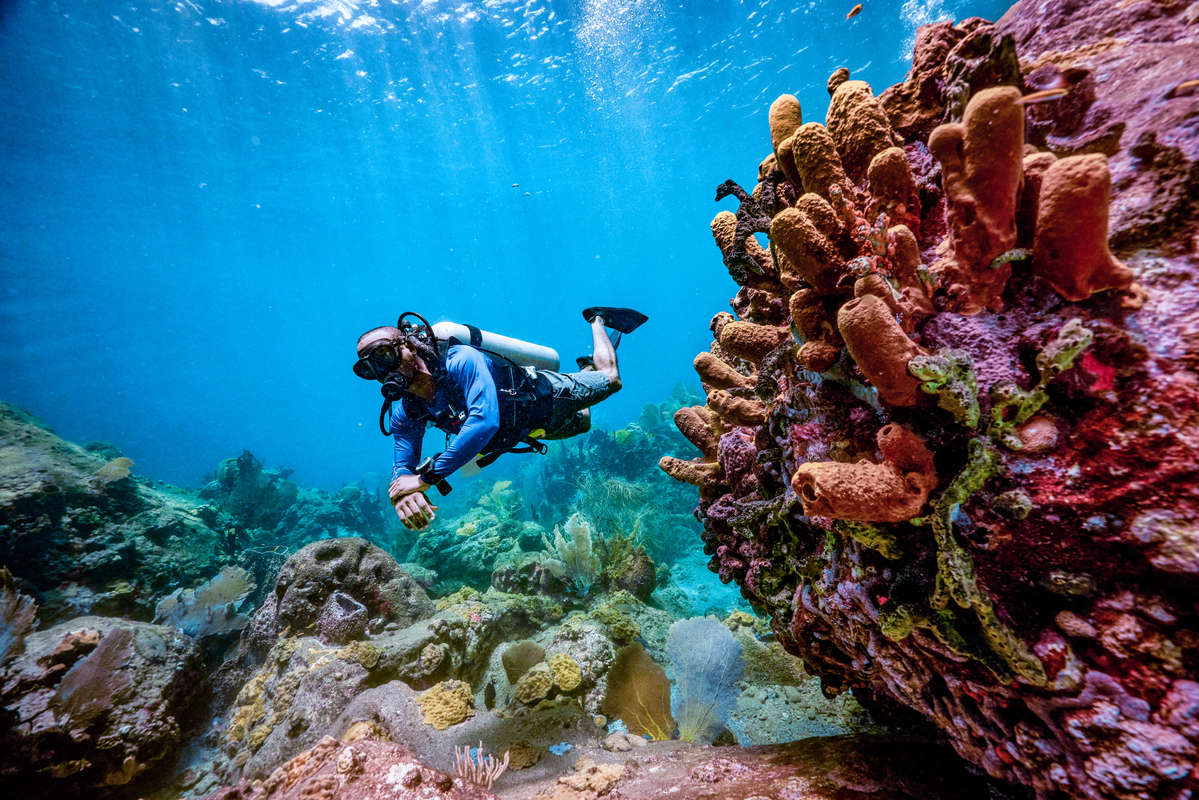
It’s almost always a good time to fly to Saint Lucia for a holiday (especially if you plan on diving!). The weather is exceptional and inviting nearly all year round. The average daytime temperature on the island is 27°C/80°F when it’s winter elsewhere and 30°C/88°F in summertime. Don’t worry about things getting too hot though, the trade winds cool things off significantly most of the year. If you’re having trouble figuring out when to go, read our post on the best time to visit the Caribbean

Sandals is one of the only resorts in the Caribbean where scuba diving and equipment is included in your stay for certified divers. No matter which island you go to for your scuba experience, you’ll be in good hands as the resort will assist you with things like getting PADI certified if you aren’t already.
Guests of Sandals also don’t need to worry about scuba equipment as all of this is included. The only thing you’ll have to rent out is a wet suit (or bring your own) and a locker in the dive shop if needed.
You get to dive at your own pace with Sandals, and don’t necessarily have to go for early morning dives if you’d prefer to sleep in. You can choose between morning or afternoon dives, and you can also give input as to the things you’re interested in seeing. Keep in mind though that morning dives offer an opportunity to get an early start, which can sometimes mean being able to go to sites that are further out and more exciting.
Dive operators associated with Sandals are friendly and engaging. They’ll help you navigate the diving process if you’re new and try to accommodate your requests once things get rolling along. They’ll also likely take you to more advanced dive sites if they can see that you’re capable and confident.
While diving is free with Sandals for PADI® certified guests, you’ll need to pay the regular PADI® associated fees for your certification. If you’re planning on getting certified during your holiday, opt to do some e-learning ahead of your trip to speed things up once you get there. After you’re certified, you can dive for free for the rest of your holiday with up to two tanks per day.
Insider tip: Want to get a head start? Check out some of the Sandals Scuba Courses or read about how to Get PADI® Certified in 48 Hours.
Dive safety is important no matter where you go. Beginners especially will need to pay special attention to all the tips, instructions, and suggestions from their dive team. Even advanced scuba divers should stick to the basics in terms of communicating underwater effectively and following other recommended safety procedures. Divers should always stay close to their assigned dive buddy and choose reputable dive operators like those available at Sandals to book their dive excursion. Finally, look over your equipment before you use it to make sure it’s in good condition and suitable for safe use.
Tip: When heading out on a dive holiday consider getting dive insurance! This will come in handy in the event of medical emergencies or other unexpected happenings.
Those who love scuba diving really, really love it. Others may find different options less challenging, or simply more entertaining. If you’re one of those people who might just be accompanying a dive enthusiast and want to know what else you can do in Saint Lucia check out our picks of the best things to do in Saint Lucia. If you want a bit of scuba but don’t want to go all the way in, try things like SNUBA, or go for a snorkelling trip.
Saint Lucia is a top-ranking dive destination where over 150 different species of fishes can be found. Both photographers and dive lovers are in store of an exciting experience on the island where divers can explore marine parks, reefs, shipwrecks, and more. In Saint Lucia, divers get a chance to swim amid “the rainforest of the sea” and see what the day to day is like for many different types of marine life.
Saint Lucia is known for its amazing dive sites and while on holiday you can dive at numerous world-class locations. Dive sites in Saint Lucia attract divers from all over the world.
Sharks aren’t the most common sighting in Saint Lucia for divers, but that doesn’t mean there are no chances of spotting one. You might get lucky if seeing sharks in real life is your goal. Chances of seeing sharks may be higher on a night dive. While seeing sharks isn’t guaranteed, you’re likely to see things like frogfish and barracuda.
To find out more about diving in Sandals visit the scuba diving page, and to book your next trip click here.